China's burgeoning population - the largest on Earth
China is the most populous nation on earth. The figures are so large that they are hard to take in. At 1,439 million (2023 estimate) this is 18% of the world population ➚ of 8,010 million, or in other words one person in every five lives in China. No country has ever ruled so many people. China's population is over four times the population of the US or double the entire population of Europe (2023 figures). Population density is uneven: 70% of people live in the eastern third; while the extensive deserts and mountains covering half of the area has only about 12% of the population.
However it may be a surprise to know that this is not a modern phenomenon, two thousand years ago the whole population of the vast Roman empire was comparable to that of China.
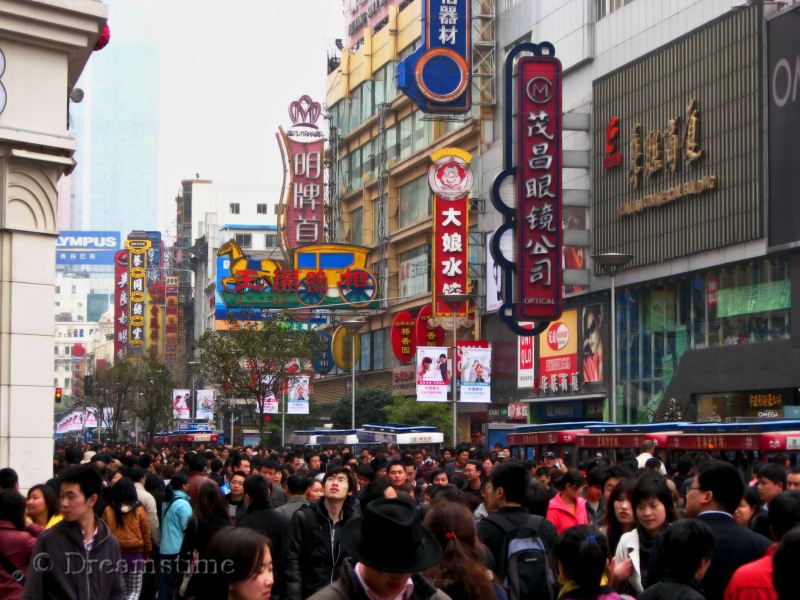
China's population growth over history
Chinese civilization began along the Yellow River at about the same as those of Egypt and Mesopotamia. Initially people settled in the immediate vicinity of the valley.
The first accurate population statistic comes from as long as go as 2CE in the Han dynasty. It revealed a population of 57.7 millions in 12.4 million households. Later in 140CE the figure had decreased to 48 million people in 9.5 million households - probably due to incursions by northern nomads. Meanwhile the whole Roman Empire of Emperor Augustus ➚ [27BCE-14CE] had between 70 and 90 million people.
At this time most people were living along the Yellow River valley (Shaanxi, Shanxi, Henan, Shandong) but also the remote upper stretches of the Yangzi in Sichuan. There were fewer people in the lower Yangzi which is now the most densely populated region of China.
Two thousand years of population statistics
During the Han dynasty it is estimated that the urban (town) population was between 10 and 20%. The then capital city of Chang'an, Shaanxi had 80,000 houses with 246,200 people, the city of Luoyang, Henan 52,839 houses with 195,504 people and Chengdu, Sichuan had 76,256 houses with 282,147 people.
After the Han came the turmoil and wars of the Three Kingdoms period when the population reduced to 25 million (280CE), although it may have been as low as 16 million (an apparent loss of 30 million).
When the Tang dynasty re-unified China the population rapidly climbed to 52.8 million (754CE). The An Lushan rebellion of 766CE reversed this quickly down to 17 million. The following Song dynasty was another period of prosperity that brought another sharp increase to about 100 million followed by the Mongol invasion which led to a steep decline. By the end of the Song dynasty the majority of people lived in southern China (as defined by living south of the Huai River).
In the next Yuan dynasty the number of taxed individuals was 58 million, the population then more than doubled to about 150 million by the late Ming. This trend continued into the Qing, with expanded territory under Emperor Qianlong, the population grew rapidly to 243 million in 1778 and about 400 million in 1840. In 1820 China's population of 381 million dwarfed that of the whole of western Europe of only 122 million.
The devastating effect of warfare is evident in these population figures. It is estimated that one in three (about 30 million) died in the Mongol invasion that defeated the Song (1279). In the Manchu conquest (1644) 16% died (about 25 million). In the Taiping Rebellion (1865) 12% died (about 50 million). By comparison the more recent Japanese occupation (1928-37) 5 million and Civil war with nationalists (1945-49) at 2.5 million seem relatively low. Comparison of these figures with total dead of two World Wars (80 million) demonstrates how high these figures are. In a List of the top 30 world atrocities ➚ China accounts for 162 million deaths while all others total 260 million deaths - so China represents 62% of these man-made disasters. With a keen knowledge of history the Chinese people equate division and conflict with traumatic death tolls. Historians and philosophers ➚ believe that over-population causes famines which in turn lead to conflict. This is particularly true of the Qing dynasty when over a hundred years the population doubled to 400 million and the Taiping Rebellion resulted.
People on the move
The spread of people over what is now China from the heartland of the Yellow River valley was fueled by a variety of factors. Overcrowding led people to seek new land to cultivate, while warfare and unrest caused people to move south to escape the turmoil in the north. There was also forced state colonization; the first documented case of forced migration came when Emperor Qin Shi Huangdi moved people to cultivate the land and defend frontier regions. In this case it was the east coast that was the main area colonized; as an incentive colonizers were given 12 year exemption from forced labor.

Historic population of China from Han dynasty (1CE to present data).
Data from various sources listed at the bottom of this page.
In the following Han dynasty Emperor Wudi forcibly resettled 700,000 people to the Gansu corridor to defend northern access to China. During the turmoil of the Three Kingdoms people moved to escape the fighting by settling the sparsely populated lands in the south-east, the Yangzi valley and southern coast (Fujian and Guangdong). It was not until the Song dynasty (800 years on) that southern China became more populous than the north.
Colonization has continued to take place over the centuries. Manchuria (Liaoning, Jilin) was heavily settled by Han Chinese in the early 20th century - mainly from Shandong. The Peoples' Republic has continued the policy of colonization to less populated land. Even today there are large incentives given to Han Chinese who move to Tibet and Xinjiang.
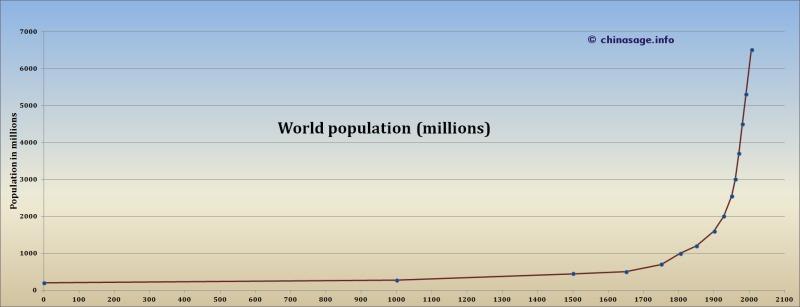
World population from 1CE to present data.
Data from World Population ➚.
Chinese Migration
The movement of people into China has never been particularly significant, the over-crowded nature of China leaves little land for people to settle on. There has always been much more movement the other way. There are about 25 million in Taiwan; Hong Kong and Macau; 20 million in south-eastern Asia and about 5 million elsewhere in the world giving a total of 50 million of Overseas Chinese. Singapore has a dominant population of 80% ethnic Chinese. The Overseas Chinese community has been very important in recent Chinese history. They helped fund and support the revolutionary movements and more recently fund the spectacular growth of the Chinese economy. The Chinese government continues to consider people of Chinese descent wherever they happen to live as their citizens.

Counting people in China
Taking an accurate population census has only been possible in recent years; even today the unknown number of illegal immigrants makes it hard to measure population accurately. In ancient times this was much more difficult. A census was carried out mainly, if not entirely, for taxation purposes. Typically it would be the head of the family who supplied the figures. (This was also the case in the UK up to the end of the 19th century). The householder may deliberately conceal his true wealth in the hope that this might reduce his tax liability. He may choose not to record all his concubines (often a clear indicator of wealth) distorting the census figures and also the ratio of men to women. The other factor was that during period of unrest or warfare the whole of China could not be surveyed, and areas of conflict were under-reported or not reported at all, the census was restricted to towns and the 'dangerous' countryside ignored.
All these factors make the interpretation of historic population figures open to debate not only in China but anywhere in the world. Experts suspect that they record only 50% of the true figure and they tend to exaggerate periods of change as they are fairly accurate in times of prosperity but under-reported in times of unrest.
Applying Malthus
It was the British cleric and scholar the Reverend Thomas Malthus ➚ 1766-1834 who made a significant contribution to the study of population dynamics in his study ‘An Essay on the Principle of Population’ (1798). He held the view that population has a natural tendency to forever increase until it is naturally controlled by famine, disease or warfare. Over-crowding leads to competition which triggers war for access to a limited supply of food and so decreases the population. Over-crowding also gives easier transmission of infectious diseases. So before modern times the population of a region had a natural limit that could not be exceeded because one of the controlling influences would cause it to decline. Cycles of increase and decrease are seen as natural processes not chance happenings. This analysis is evident in China, periods of steady population growth were followed by famine that fueled civil unrest. The Taiping Rebellion is the classic example of this.
It is only in modern times when medicines, intensive agriculture and free trade have allowed nations to import food in bulk that the Malthusian limit has been exceeded. A dramatic illustration of this effect is that the availability of potatoes in Europe allowed the population to quickly double.
People's Republic of China
After the Japanese Occupation (1937-45) and then the Civil War with the nationalist GMD (1945-49) the concern was that a whole generation of young men had been lost. Mao Zedong firmly held the view that over-population was not an issue, on the contrary, more people were needed to farm the land and join the army.
At this time there was very little mechanization and so there was an enormous need for manual labor in agriculture with about 80% of the population living in the countryside. Measures were introduced to encourage more women to work on the land. Fields had been standing idle due to lack of people to cultivate it. So the government line was that more people were needed in order to alleviate famine rather than the other way around. Instead of over-population causing poverty it was stated that poverty came from exploitation and oppression. Mao even at one time declared that birth control was a capitalist plot to weaken China.
In these early days threats by the United States to use nuclear weapons against China were part of the debate, with such a huge population China would not be wiped out easily by a nuclear war, the low level of urbanization made China less vulnerable to nuclear strikes. In November 1957 Mao Zedong stated that nuclear war would at most halve the Chinese population and not necessarily prove decisive. At this time China did not have nuclear weapons and the huge population was seen as an effective counter measure - sheer weight of numbers would win out.
From 1949 there was a steep increase at a rate of 2 to 2.5% annual increase or about an extra 10 million people a year. This was partly because the new government introduced many sensible health care initiatives that succeeded in rapidly decreasing infant mortality.
No accurate census figures are available for the whole of China in the period of upheavals from 1850 to 1953 - estimates for 1949 vary from 350 to 600 million. The first accurate census figure was 582.6 million in 1953, by 1957 the population rose to 656.6 million which is half the present day figure.
During the period 1958-61 many people died of famine in the Great Leap Forward the growth dropped fell back to 1.5% because of a doubling of the death rate, not because of declining birth rate. And so the 1959 census figures are not considered reliable, population was believed to be still rising by about 10 million a year.
Mao Zedong spoke during the 1950s about the difficulties of controlling population: “We need planned births. I think humanity is inept at managing itself. It has plans for industrial production… but not for the production of humans.”
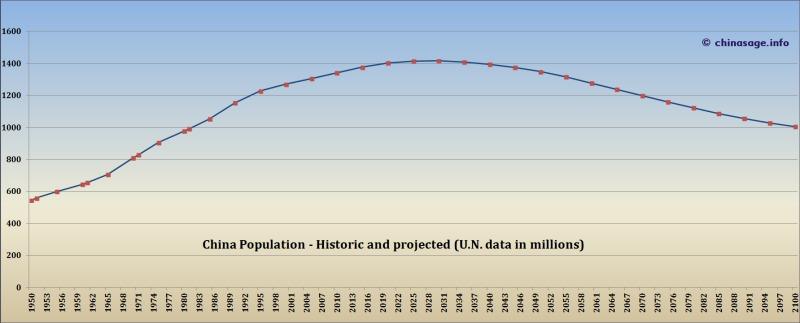
Historic population of China and projected growth and then decline after 2030.
Data from United nations ➚.
Spectacular modern growth
In 1960 Ma Yinchu ➚ published his ‘New Population Theory’ which challenged Mao's view and as a result he was purged from the party. He held the view that a 2.5% rate of increase or above would lead to famine and reduction to a rate of 1% was necessary. This was also the view of foreign experts in demography; US experts in particular believed that China's huge population would inevitably lead to mass famine and the collapse of the communist government. 22 years later in 1979 Ma Yinchu was rehabilitated (at the age of 97) with his views vindicated but by then there were an extra 325 million mouths to feed in China.
During the Cultural Revolution (1966-1976) the lack of firm government control led to inaccurate censuses. It was the relentless annual growth in this period (2.0 to 2.5% annual or 20 million more people a year) that began to create huge pressure. The impact of agricultural reforms started to change the government's attitude to population. With artificial fertilizers and mechanization it was now possible to produce more food using fewer people.
One child policy
By 1964 the Chinese population had risen to 694.5 million, during the 1970s the study of demographics led to some panic about the growth rate - it was believed to have risen to 3% per year by the late 1960s. By 1982 China's population had grown to 1,008 million - doubling in just 30 years - and the profile showed that many young women born after the foundation of the PRC were now at child-bearing age (46% of people were under 20 years old). Even though food production had doubled the population had doubled too - vindicating Malthus’ view that food supply controls growth.
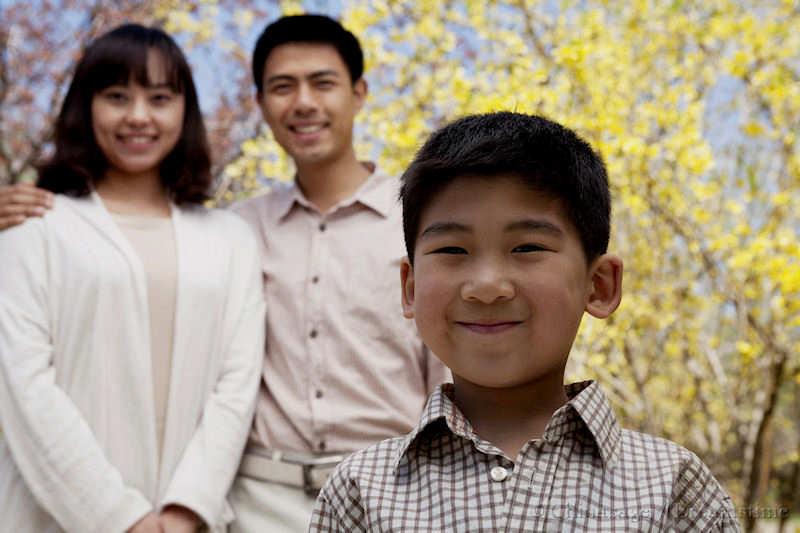
In 1980, at a time when the Communist government control was still strong, a stringent One Child Policy was introduced to restrict population growth with the eventual aim of overall reduction. The One Child Policy ➚ is the only one of its kind ever implemented in the world. Experts calculated that China could only support a population of 1.4 billion before famine occurred, so the aim was originally a limit of 1.2 billion by 2000 and then reduction to about 750 million by the mid-21st century. This was to be achieved by modernization and birth control.
In those days most people in the cities were assigned to a work unit, and this controlled all aspects of life including marriage and birth control. There was no privacy or independence. This made the policy enforceable in urban areas. It is the largest and most successful birth control policy in world history. The motto in 1973 was ‘Longer, later, fewer’ - (wait longer, marry later, fewer children). In 1980 the marriage law raised the minimum marriage age from 20 to 22 for men and from 18 to 20 for women. For Communist Party members the line was that the ideal age was 25 years old for a woman to marry and 30 for a man.
To avoid rural hardship some exemptions were added in 1984 but only to be removed in 1991 following protests. In the 1990s the disparity between rural and urban had narrowed. The rural rate of 2.3% birth rate in 1990 reduced to 1.8% in 1996 this compares to the urban figure of 1.6% in 1990 down a little to 1.5% in 1996. In fact the difference was more about practicality - the policy was pretty much impossible to enforce in rural areas - children could be hidden or explained away as ‘visitors’. So two to three children was the norm in rural areas and in addition ethnic minorities were given exemptions.
The policy was brought in with both incentives and penalties. For each extra child the family income was cut by 10-20%. A fine was levied during the second pregnancy and as it was refunded on abortion, there was a clear monetary incentive to terminate pregnancy (extra paid holiday was also offered). Some chose female sterilization after the first child, in quite a few cases forced sterilization was imposed on women who had two or more children. Although female infanticide had always been illegal, the rules were more strictly enforced. Even in 1978 195 cases of female infanticide had been reported in one Anhui county alone. Other incentives for single child families included easier access to health care and better housing. Many regarded it as the most hated party policy. Recent increased prosperity has allowed couples to have more children because they could afford to pay the fines. One estimate is that only 1 in 5 families have a single child.
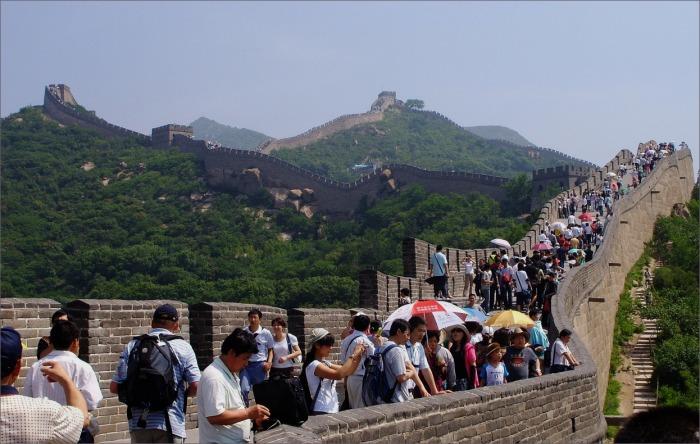
Soon there was a generation of ‘Little Emperors ➚’ - pampered single children with the undivided affection of two parents and four grandparents. Lack of competition with siblings led to a feeling of entitlement and selfishness. However there was one clear benefit, girls were no longer treated so badly, if the only child was a girl there could be no preferential treatment of a brother. In June 1995 there was an attempt to introduce eugenics called the ‘Natal and Health Care Law ➚’ with the aim of reducing ‘inferior quality’ births. For at risk mothers there were restrictions placed on marriages, with abortions and forced sterilization used in some cases.
By 1996 the annual growth had been reduced to 1%; but the aim of a 1.2 billion limit by 2000 was not achieved, population past this milestone in 1995 and was still rising. The preferred method of birth control in China is by female intra-uterine device (IUD), male sterilization has declined while use of condoms has increased.
In 2007 rural pensioners at the age of 60 were given a payment if they had only one child or two girls; but by November 2013, the policy was loosened - a couple could have a second child if one of them was an only child (rather than both which was the previous rule).
In October 2015 it was announced that the hated One-Child policy was to be scrapped ➚. The success of the policy was seen to be leading to a severe downside - a huge bulge in the demographic of people born between 1950 and 1970 followed by a sharp decline and therefore young people would have to pay a considerable amount for social and health care for their elderly relatives. The policy then allowed for two, but only two, children per couple. The same incentives and fines apply to limit the family to two children - it became a ‘Two-Child Policy’ rather than being abolished. Many parents choose to use their increased wealth to pay the fines imposed on additional children. Most recently this has been further relaxed because the birth rate has rapidly declined in China, the ‘Three Child Policy’ was announced on 31st May 2021 .
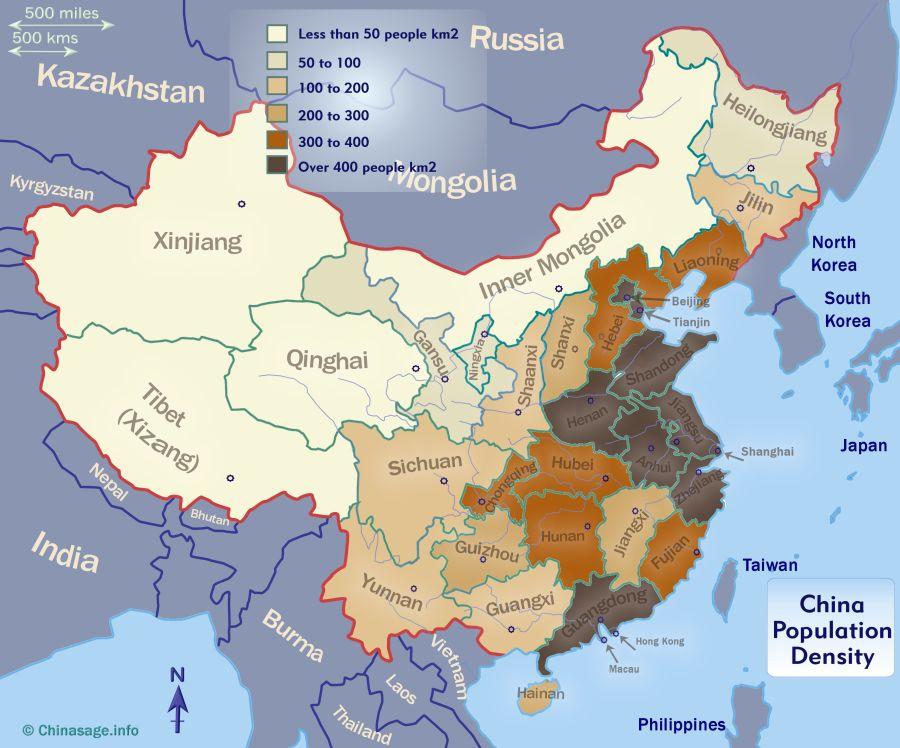
China's provinces showing the variation of population density. Data source: province table
Migration to Cities
At the birth of the People's Republic in 1949 only about 20% of the population lived in cities (places with population more than 2,000 people) this had already risen from an estimated 27 million in 1938. At least 330 million moved to cities to escape the famines of the Great Leap Forward (late 1950s). This flow was temporarily reversed during the Cultural Revolution when about 15 million were forcibly sent back to the countryside. In 1978 China had 118 million non-agricultural workers (still only about 17%) which rose to 369 million in 2002 and set to increase to 533 million by 2020.
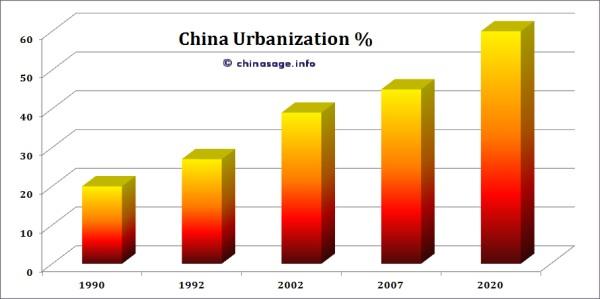
Urbanization of China 1990-2020.
Data from China Statistical Yearbook 2007/8.
Since 1980 the pace of urbanization rapidly accelerated. In 1990 this was 20% , 1992 27%, 1997 32%, 2002 39%, 2007 45% and expected to be 60% by 2020. This vast movement of people is the biggest mass migration in human history. In 1998 alone 120 million people left the countryside for the cities (that is twice UK's entire population in one year). In many cases the migrant workers set up huge shanty towns on the fringes of cities in the hope of finding work. Shanghai and Beijing had about 3 million migrant workers at this time. This migration had the effect of reducing rural poverty as many migrants sent part of their salary back home to the village.
The most urbanized provinces are: Liaoning, Jilin, Fujian, Shanghai and then Guangxi, Guizhou, Shanxi, Hubei and Anhui; the least urbanized are Tibet and Sichuan. The numbers show that cities have grown greatly in numbers but the provinces of Guangdong, Guangxi, Jiangxi, Xinjiang and Yunnan have grown while the slowest growth had been in Shandong, Liaoning, Jiangsu, Tianjin and Zhejiang.
Gender imbalance
The core belief in China is the veneration of ancestors and continuing the family line remain very strong motives for favoring boys over girls. In rural areas a family needed sons to continue to cultivate the family land and look after parents - daughters always moved away to marry and did not maintain contact with their birth parents. This gender preference even survived the one child policy in rural areas - on the event of the birth of a firstborn girl a second child was still allowed in the hope of a boy.
A game changer has been sex determination during pregnancy, couples are now able to choose to abort a female pregnancy. Modern artificial fertilization methods also now allow only boys to be selected. In 2004 the government brought in measures to give an incentive for girls over boys, in benefits and preferential treatment, this has not been particularly successful.
The gender imbalance is now causing social problems, with an excess 10 to 20% of men, competition to find women is intense. There have been reports ➚ of women from poorer areas in China or abroad being sold to desperate single men. There are now about 30 million unmarried men with no realistic chance of marriage. The imbalance is not uniform across China, it varies from 125 boys to 100 girls in Henan and Hubei provinces while 105 to 100 in Xinjiang and Tibet where the cultural preference for boys is not present.
Ethnic mix
It is a common, initial observation that all Chinese look the same, and indeed Han Chinese consider themselves part of one large family, all descendents from the legendary founder of China Huangdi (the Yellow Emperor). At over 90% of China's people the Han dominate but the remainder are important because they inhabit the less populated parts of China. For a full breakdown of the ethnic mix and the distribution see our people's of China page. Ethnic minorities have been treated differently under the birth control measures, partly in deference to cultural differences. Some were exempt from the single child policy controls brought in the 1980s.
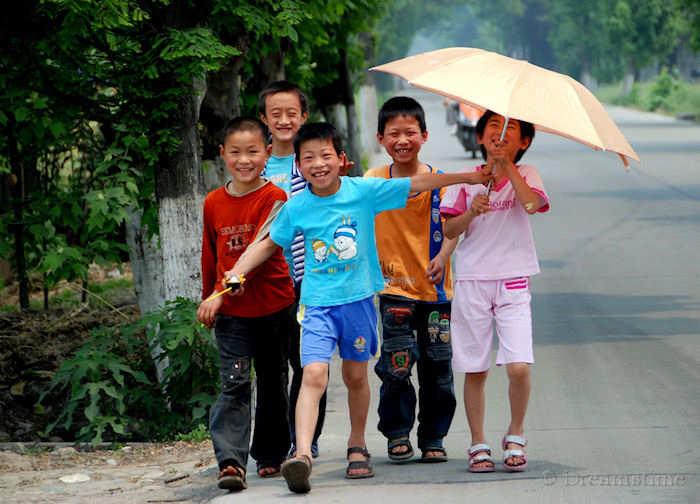
Future growth of population in China
The target was set for the population to peak at 1,040 million and then gradually decline as the children born under the single child policy reach maturity. However this has inevitably led to a boom generation (25% of the population) who will require health and social care as they reach old age in 2030-40 with far fewer descendents to care for them.
The biggest concern at present is that women are choosing not to have children and pursue a career instead. In 2020 the lowest number of births ➚ were recorded since 1949. It is likely the government will begin incentives to increase the birthrate but the 'Three Child policy' introduced in May 2021 may not be sufficient to persuade young women to have more babies. Now that women have moved away from rural villages to work in cities it is much less attractive to become a full time child carer. The current projection is for the population to reach 1,402 million in 2050 but then fall markedly to 1,065 million by 2100. India is due to overtake China within the next ten years.
In economic theory there is a Lewis turning point ➚ where an aging population can severely limit economic growth. With no state pension scheme in China a high proportion of available income created by a dwindling number of younger people will have to be plowed into supporting the elderly. This is why the government is keen to promote a population boom, even though this is the last thing the planet needs.
With China's increased prosperity and entry into the world trading market there is now no reason for China to limit herself to self sufficiency in food. China can now afford to import all it needs. This is particularly evident in the case of rice, for centuries the main foodstuff of southern China. It is now cheaper to import rice from lands further south - Vietnam, Malaysia and Indonesia - the ancient practice of growing rice with intensive manual labor on marginal land is in decline. China has become a net importer of rice.
China's huge population and increasing GDP has never been seen before, when the British Empire was at its height, the UK represented only 2.5% of world population and when the US followed as the world super power it had only 4.6% of the world population, so at 20% China's future power and influence can only be guessed at.